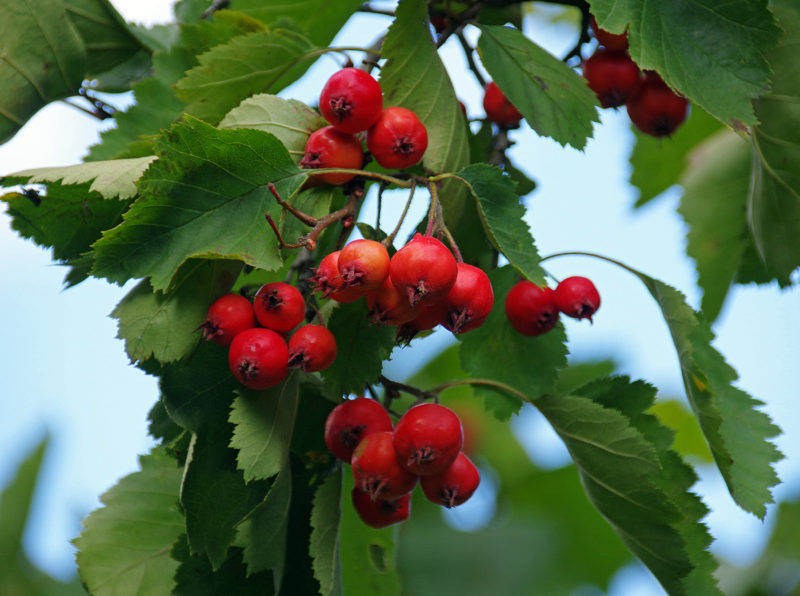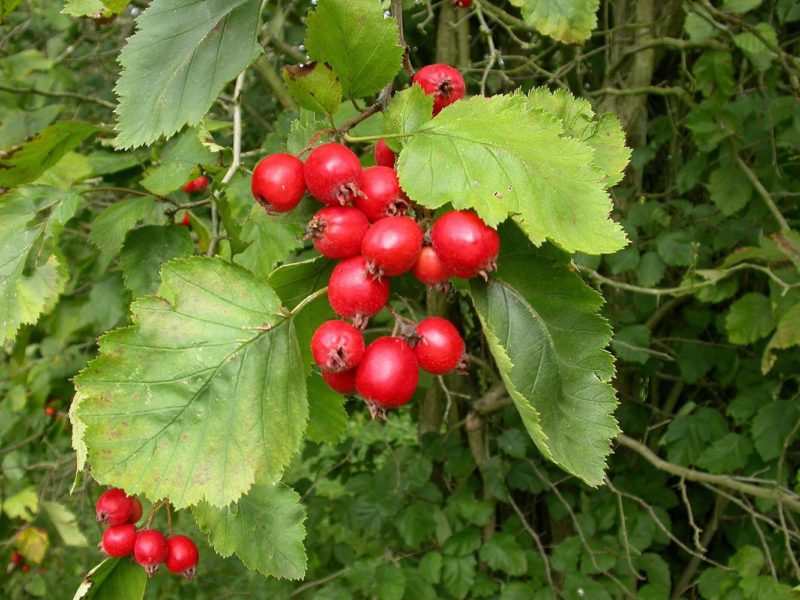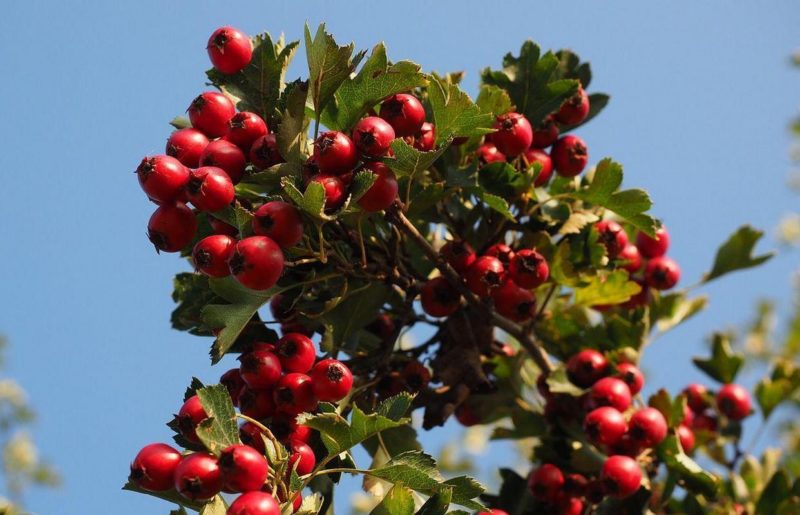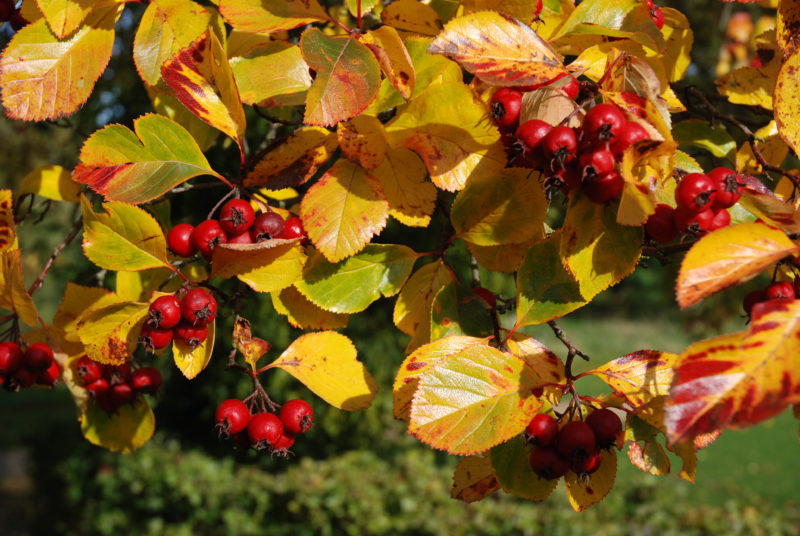Common Hawthorn is a medicinal plant. But trees and shrubs are often grown as ornamental.
Material Content:
Botanical Description
Hawthorn is a deciduous shrub or tree. It has a genus of about 200 species and more than 2000 hybrids. Culture can develop in one place for 300 years.
Ornamental trees and shrubs belonging to this genus are distinguished by a dense rounded crown. The plant is very beautiful during flowering, has thorns, gives bright red fruits, which are edible and even healing in many varieties.
The fruit is a small apple ripening in the fall. There are several seeds in the fruits. Use hawthorn to prepare medicinal potions, compotes, jams and preserves, eat raw. The plant is a wonderful honey plant.
Varieties of hawthorn
The common prickly Hawthorn of the Pink family has many varieties and hybrid forms. All varieties of hawthorn are very beautiful.
- The most popular among our gardeners is “Paul Scarlet” - a shrub with a very spreading crown, reaching a height of 10 m. Young branches of the bush are reddish in color, the variety bears fruit very rarely. Its decorativeness is enclosed in very large inflorescences collected in umbrellas.
Attracting attention and hawthorn "Toba." If you make a brief description of the plant, it does not bear fruit, has very large flowers of bright pink color, which are strewn with a tree. This variety is very decorative, and resembles an evergreen plant. - In Crimea, the Crimean hawthorn grows, which is an elegant tree. The plant lives next to the bushes on the slopes.Fruits and flowers of this variety are used in quackery.
- Chinese species are common in China and Korea. There are varieties in the east of our country. The trees reach 6 m, and they have completely no thorns.
- Maksimovich hawthorn is an ornamental plant, which is a tree up to 7 m long. The crown has an ovoid shape. The plant blooms only 11 days, but at this time the tree looks fabulously beautiful. It has large fruits of bright red color, which ripen in August.
Growing Features
The plant is very unpretentious and quickly adapts to almost any growing conditions. The tree will grow well in the sun and in the shade, on the north side of the site. The darker the color of the leaves of hawthorn, the easier the variety will tolerate a lack of ultraviolet radiation.
But if you want to admire the lush flowering of hawthorn, and even collect healing berries, then it is better to plant it in a sunny place. Planting in the sun is especially favorable for variegated varieties that lose their decorative effect in the shade.
Although the plant can come to terms even with poor soil, planting in a humus-rich area with a neutral soil reaction is still preferable. If you plant a tree on heavy loam or poor sandstone, then it will lag behind in development.
Outdoor landing
Once the weather is warm in spring, you can begin to land. Usually in the middle lane this period begins in the second decade of April. It is advisable to plant the crop in the spring, as young seedlings have time to grow stronger during the summer and gain strength for wintering.
To plant a seedling, dig a hole in the size of its roots. The plant should not be crowded, but should not prepare too deep a hole. On average, the size of a landing hole should be about 70 cm wide and 70 cm deep. It is necessary to lay drainage at the bottom, in the role of which expanded clay, brick chips or gravel can act. Then a third of the hole is covered with nutritious soil mixture.
When planting, the seedling is lowered into the hole so that its neck remains at the level of the soil. The rhizome should be well spread, then sprinkle it with soil and ram. In conclusion, the tree is abundantly watered. Not be superfluous will be the mulching of the perinosal circle after landing. Mulch prevents the evaporation of moisture and greatly facilitates the care of plants.
If hawthorn is planted alone, it is recommended to leave about 2 meters to the nearest plants. If a hedge is formed from the plants, then between them, when planting, they leave about 20 cm.
How to care for shrubs
There are peculiarities of hawthorn care, although this plant is capricious. First of all, you need to establish the correct irrigation schedule. Hawthorn really does not like excessive dampness, since its root system is subject to rot. Most varieties tolerate drought, so watering the crop too often is not necessary. Mature specimens can not be watered at all, and young seedlings should be moistened only during a period of prolonged absence of rainfall. It is enough to pour two buckets of water under each bush.
To achieve magnificent flowering, hawthorn is recommended to be additionally shed during the budding period. It is especially important not to miss watering during a drought.
Also, care consists in the timely removal of weeds and loosening of the soil. Not be superfluous will be the mulching of the roundabout circles throughout the season.
This culture practically does not need top dressing. Fertilize hawthorn only if it is very stunted and poorly developed. Variegated forms are fed twice per season. Hawthorn loves bird droppings, compost and humate. Urea can also be added by dissolving a handful of fertilizer in a bucket of water. The plant will not refuse to introduce complex mineral mixtures.
Breeding methods
You can propagate the culture in several ways, and each gardener chooses the most suitable option for himself.
Seed propagation is the most preferable option, since plants grown from seeds are stronger and more adapted to the environment.
To obtain seeds, the fruits should be crushed, filled with water and wiped through a sieve. It is necessary to select the largest seeds, since not all seeds produce sprouts. In some varieties, more than half of the seeds are empty.
The seeds of hawthorn are very poor in germination, so they need stratification before sowing. Also, a too thick shell prevents the germination. Sow seeds before winter or spring in the grooves in increments of 20 cm.
Also a popular method is root cuttings. You need to select the roots with a thickness of about 20 cm, dig them out and cut into small pieces. The cuttings are then planted in the ground at a slight slope, leaving a tip of 2 cm above the surface. It is best to plant the cuttings in a greenhouse in the spring.
You can still propagate the culture by root offspring. Shoots that have their roots are suitable. The offspring is separated from the shrub, cutting off along with the rhizome, and left until it grows up. After this, the young plant is dug up and transplanted.
Protection against diseases and pests
Most often, hawthorn suffers from a fungal disease - powdery mildew. First, a whitish coating appears on the leaves, then the shoots begin to bend strongly. To prevent the disease should be removed in the spring of plant debris under shrubs, cut off dried branches. At the first symptoms of the disease of the plant, it is necessary to spray the preparations with Skor or Vectra, or treat it with colloidal sulfur.
Another ailment that can affect hawthorn is ocher spotting. Symptoms - the appearance of spots on rounded foliage. With a strong spread of the fungus, the foliage quickly begins to dry. Against ocher spotting, the same preparations are used as against powdery mildew.
Of the insect pests, hawthorn can choose an apple aphid, which settles in whole colonies on the bush. The aphid sucks the sap from the tree, and as a result it stops growing, loses its decorative effect. Against the pest use the drug "Fufanon."
Role in Landscaping
Hawthorn looks very decorative both during flowering and during fruiting. Variegated forms are very beautiful throughout the season. They grow plants in different regions. Due to its unpretentiousness and attractive appearance, the hawthorn has earned the love of many gardeners and landscape designers.
Looks great single tree. Hedgerows from shrubs grow almost impassable. Gardeners often use hawthorn as a dwarf stock. From the hawthorn, you can grow an elegant bonsai on your site or just collect the fruits and use them for medicinal purposes.
Hawthorn (crataegus laevigata) is a plant that must necessarily grow in every gardener. Many gardeners will like the attractive look and collection of healing berries.



















